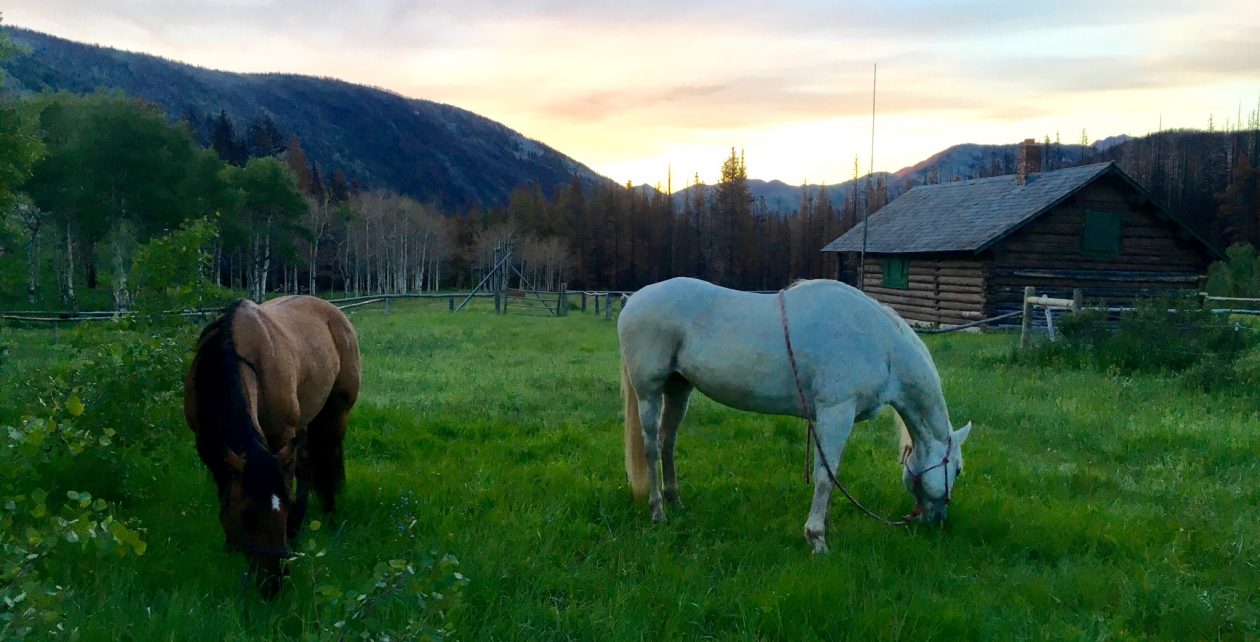When it comes to packing a late season camp into the backcountry there are many different opinions on the type of tent to use. Last year I purchased and used a Cabelas alaknak 12×12. Is this the best outfitter type tent on the market? No, I wouldn’t say that. The alaknak is made of a type of heavy nylon fabric treated to be waterproof. A traditional outfitter tent is made of heavy canvas also treated with waterproofing and much more durable. But, when it comes to packing in a cold weather type camp you have to consider what works best for you. First thing to consider, weight! The alaknak has a total weight of 67 lbs., this is tent, frame, and stakes. It is a 12×12 size which is comfortable for up to 3 people with cots, cooking table and equipment, and wood stove for heat. If you are a professional outfitter or a commercial packer, tent weight isn’t as big an issue. These people usually have unlimited stock available and are very skilled at hauling heavy loads. If you are like me with limited stock and packing experience, then weight is a huge issue. During hunting season, I loaded one of my horses with the tent, frame, stakes (I did sub plastic stakes for the metal ones), wood stove, spark box, stove pipe, numerous propane bottles (shoved into the stove pipe) and some other camp incidentals. Total weight was less than 150 lbs. Easy load for one horse.
The tent was also able to be packed in a large size pannier and didn’t have to be mantied making it easier.
2nd thing to consider is the frame. Most traditional outfitter tents have a heavy internal frame. You can use this frame or you can cut poles at your camp location and fabricate the frame. This works if you return to the same location, but if your purpose is for a mobile spike camp then cutting new tent poles at each new location would be a huge PIA.
Another consideration that I had was how much help will you have with taking down camp. Picture a traditional outfitter tent used in late November and you encounter some adverse weather conditions. Maybe rain, followed by heavy snow, followed by a temperature drop into sub-freezing temps. This happens the day/night before you are packing up to head out. A traditional outfitter tent will have to be dried out prior to packing. If not you will have a frozen hunk of canvas almost impossible to work with. Last hunting season my alaknak was left for a couple days uninhabited. There was about 6″ snow during that time. I showed up alone to pack it out, shook the snow off, took it down, rolled it up and packed it with ease. Temps were around 20 F. at the time.
While I was researching outfitter tents prior to purchase, many of the negative comments I read were that the alaknak material was terrible for condensation. I would agree that this could be a huge problem, but we used a wood stove and had the vents open for circulation and had no problems. We had about a ft of snow on the ground so would constantly drag snow in on the tent floor. The snow would melt and subsequently dry in about an hour with the wood stove going. We did not encounter any rain during our stay, but we did have heavy snow melting on the roof without any interior dripping. Temps dropped to around 0 during the night, yet it was quite comfortable in the tent with the wood stove. 
I’m confident the more traditional canvas style outfitter tents will have a longer lifespan, and obviously they will hold heat a little better. Most of these are manufactured in the western US by folks that have a good understanding of the weather conditions you may encounter. They are usually high quality and demand a substantial investment. My biggest reasons for not purchasing one of these tents was the total weight of a comparable size tent and the issue of water retention with the canvas material.
I have been hunting in the backcountry with horses for about 15 years now. I have run into 3 camps in that time. 2 were outfitters camps so they had the canvas wall tents for their clients, and one was a group of 4 guys that packed in for just a few days. By contrast the trailheads that I used or have visited are littered with canvas outfitter style tents. Corrals are either provided at the trailhead or the hunters have erected portable corrals to contain their stock. My point – why camp in a tent at the trailhead? If you have stock why not use that stock to pack your camp into the backcountry and hunt from there rather than ride each day from trailhead? Answer – convenience. It is much more difficult to do a backcountry spike camp, so why not make it as easy as possible with a light duty tent that functions similar to the canvas tent.
The alaknak is a very user friendly type of tent. In my opinion this is one of the biggest factors that prohibit more use of outfitter tents in the backcountry. For the average recreational packer the ease of use is extremely important. Late season horse packing is quite rewarding. Do some research and find what works for you. If it works for you and is enjoyable that’s all that matters. Don’t worry about the traditionalists or the professional packers that tell you this type of tent is garbage. If it helps get you into that backcountry spot making memories and maybe giving you a chance for that trophy bull, then it’s the perfect tent. 
